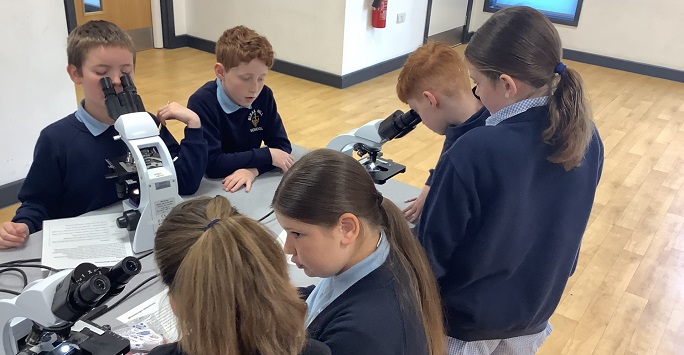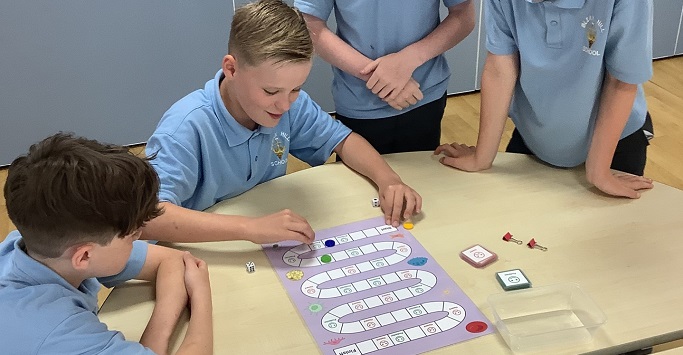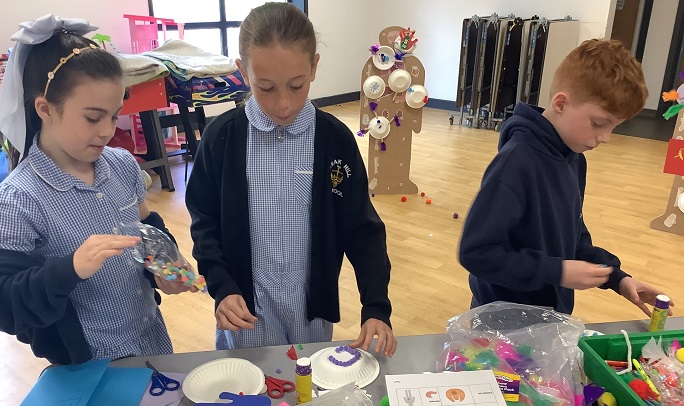
Professor Ian Copple from the Department of Pharmacology and Therapeutics recently ran science sessions entitled ‘Love Your Cells’ at Bleak Hill Primary School in St Helens. Here he tells us about the sessions.
I’ve been thinking about how to give something back to the local community and inspire the next generation of scientists. With some encouragement from a teacher that I know at Bleak Hill Primary School, I developed a science session targeted at year 5/6 children.
The session introduced the concept of cells, how they can be damaged by hazards encountered in our daily lives, and how eating fruits and vegetables can boost our cells’ ability to defend against these hazards. This links to my academic research and helps to promote a healthy lifestyle.
The children were amazed to learn that there are around 30 trillion cells in the human body and that many of them have some of the largest known cells in their fridges at home - eggs!
After digesting some background information, the children completed three hands-on activities:
- Microscope detectives – children used microscopes to look at different tissue sections and work out which parts of the body they came from, based on descriptions of the key features. The children really enjoyed using the microscopes and figuring out the identity of the tissues. I’m grateful for the support of Valentina Iorio, School of Biosciences who provided the microscopes, and Marie Held, Centre for Cell Imaging who helped to take high quality images of the tissues on the slides.

- Cell Quest board game – I designed a board game that reinforced the message that our cells are exposed to hazards that can be protected against by eating fruit and vegetables. Designing a board game was way out of my comfort zone, so it was fantastic to be able to work with Tom Owens, Lecturer in Game Design, who is based in the School of the Arts here in Liverpool. I’m also thankful for the support of James Galliford in the School of Architecture Print Media Design Suite, who kindly designed and printed 3D cell player tokens for use in the game. I’m aiming to have the board game made professionally for the next time I run the session.

- Make a cell – children used craft materials to make real or imaginary cells, and then placed them onto body cut outs to show where in the body they could be found. The children used materials including paper plates, pipe cleaners, pompoms, glue and glitter. It was very messy and the children loved it. Thankfully I had some help from the school staff to clear up afterwards!

After the children had completed all of the hands-on activities, I spoke to them about what it’s like to be a scientist, with a view to inspiring the children to consider a career in science. In exchange for a sticker (of course!) the children wrote down ‘one cool thing’ about the session. This served as feedback on their learning, which I was encouraged by.
The session was a success and will be further developed in order to run again in the future. I would like to thank the school staff and the Faculty Public Engagement team for their help with the planning of the session. I would also like to acknowledge financial support from the Institute of Systems, Molecular and Integrative Biology’s Public Engagement fund for purchasing resources.
- Professor Ian Copple, Department of Pharmacology and Therapeutics